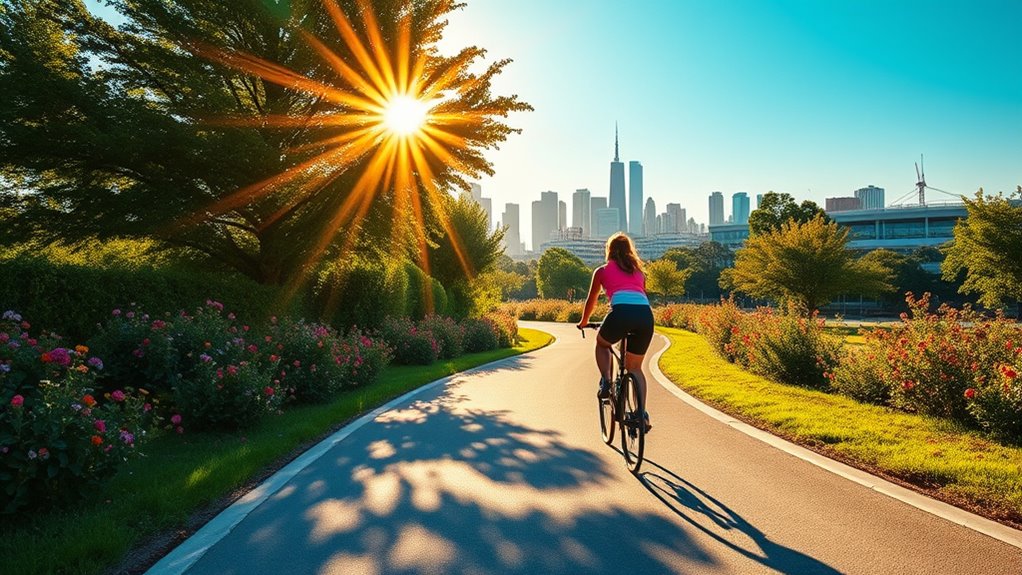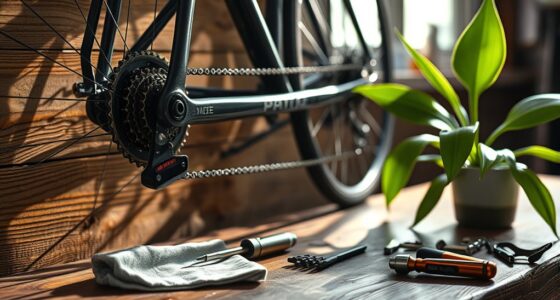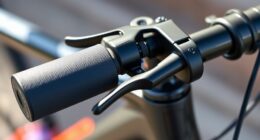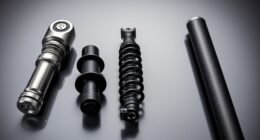Cycling is a fantastic way to beat jet lag and revitalize your body after a long flight. It boosts blood circulation, enhances mood, and helps reset your internal clock with natural light exposure. Make sure you hydrate well, plan your rides during daylight, and explore your new surroundings. After pedaling, enjoy nutritious local foods and some sunlight to further aid recovery. Stick around, and you’ll discover even more tips to maximize your jet lag recovery through cycling!
Key Takeaways
- Cycling enhances blood circulation and reduces stiffness, helping you recover from fatigue after long flights.
- Exposure to natural light during rides helps reset your circadian rhythm for better sleep.
- Physical activity boosts endorphin levels, improving mood and energy levels post-travel.
- Timing rides for late morning to early afternoon maximizes sunlight benefits, essential for combating jet lag.
- Staying hydrated before and after cycling supports endurance and overall well-being during your travels.
The Benefits of Cycling for Jet Lag Recovery
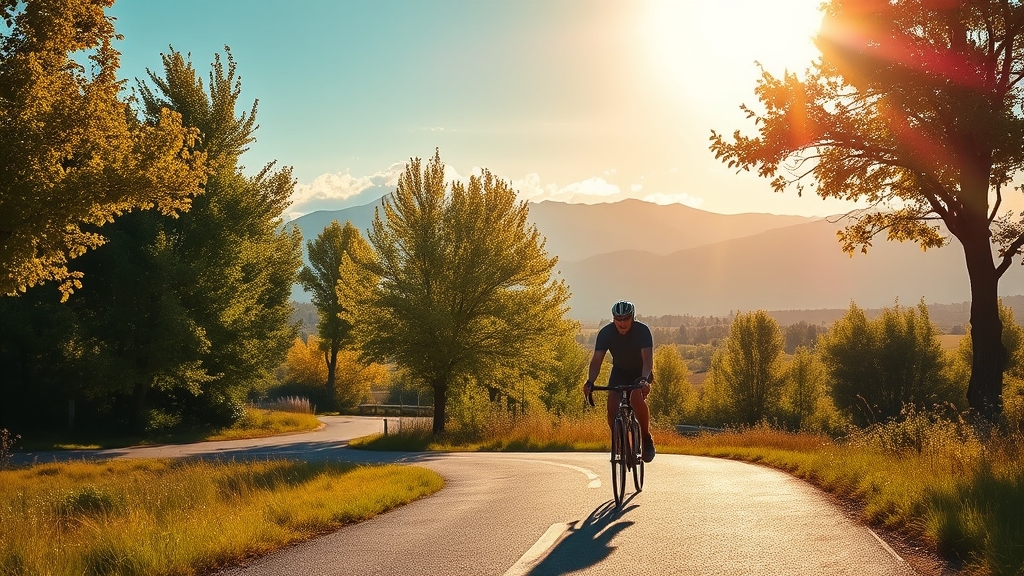
When you’re battling jet lag, cycling can be a game changer. It promotes blood circulation and helps ease the stiffness and fatigue often felt after long flights.
Cycling can transform your jet lag experience, enhancing circulation and alleviating post-flight stiffness and fatigue.
If you’re traveling west, getting outdoors on a bike exposes you to natural light, which can help reset your circadian rhythms, making it easier to fall asleep at night.
Light to moderate cycling also boosts endorphin levels, lifting your mood and energy when you’re feeling tired and lethargic. Plus, physical activity enhances alertness and cognitive function, aiding your adaptation to a new environment.
Riding a bike allows you to explore your destination actively, creating a sense of familiarity that further supports your recovery from jet lag.
Preparing for Your Bike Ride Before Departure
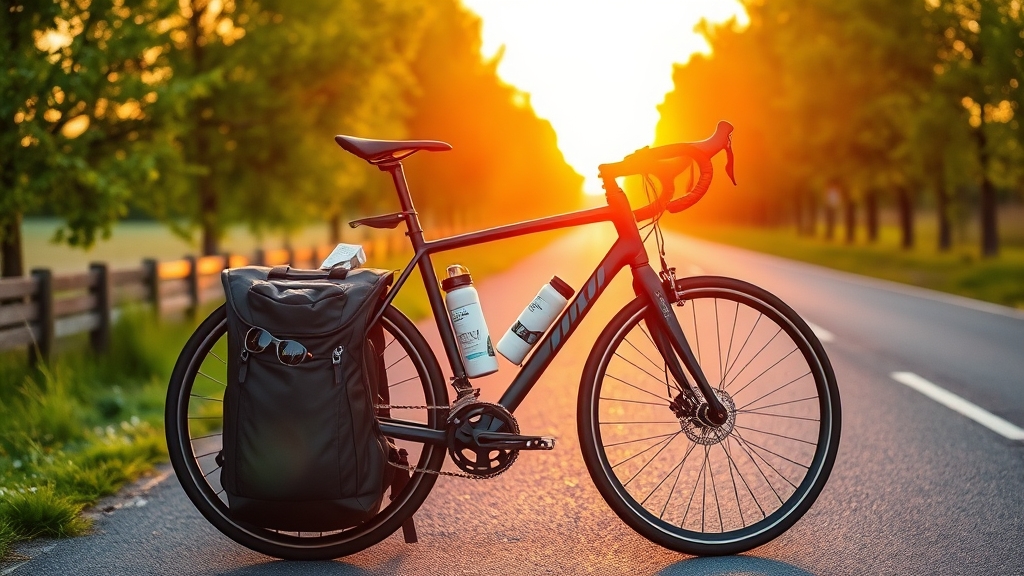
Preparing for your bike ride before departure can set the tone for a smoother shift into your new time zone. Start adjusting your sleep schedule 3-4 days ahead; go to bed and wake up earlier to sync with local time. Staying hydrated is vital, so aim for at least 8 glasses of water daily. Pack your bike essentials like a helmet and repair kit in your carry-on to guarantee you’re ready for that first ride. Lightweight, moisture-wicking clothing can enhance comfort during your flight, making it easier to shift into biking. Research bike rentals and local paths beforehand to maximize your experience.
| Task | Details |
|---|---|
| Sleep Adjustment | Go to bed earlier to sync with local time |
| Hydration | Drink 8 glasses of water daily |
| Packing | Include bike essentials in carry-on |
| Research | Look up bike paths and rental options |
How to Choose the Right Bike Rental
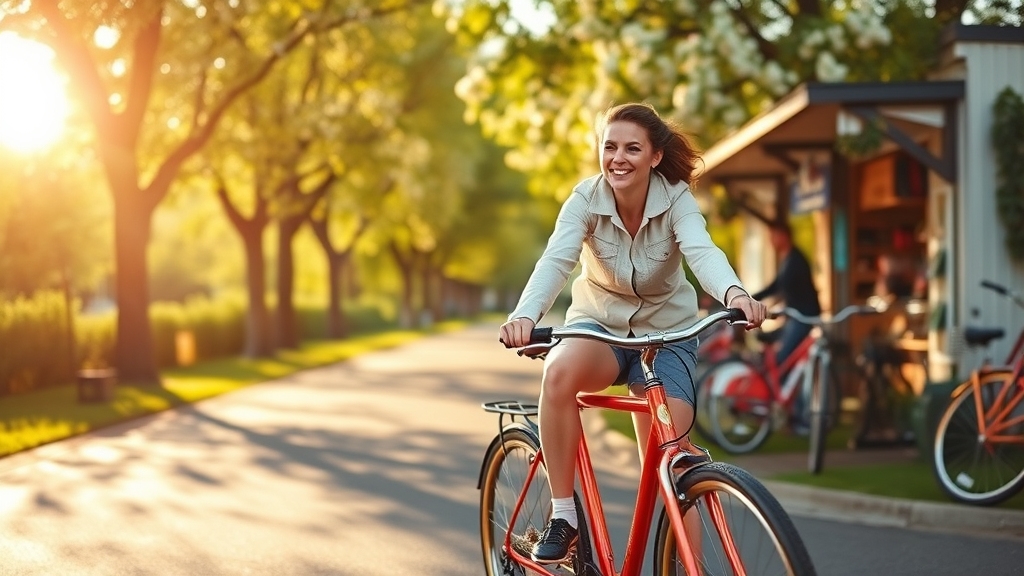
Choosing the right bike rental can greatly enhance your cycling experience in a new location. Look for shops that offer a variety of bike types, like road bikes and mountain bikes, to suit your riding style and the terrain.
It’s also wise to choose rentals that include helmets, locks, and repair kits for your safety and convenience. Consider locations close to popular attractions or scenic routes to make the most of your ride.
Don’t forget to read customer reviews on platforms like Google or Yelp; they’ll give you insight into the quality of service and bike conditions.
Finally, inquire about rental duration options and pricing, as discounts for longer rentals can help you save money.
Timing Your Ride for Maximum Effect
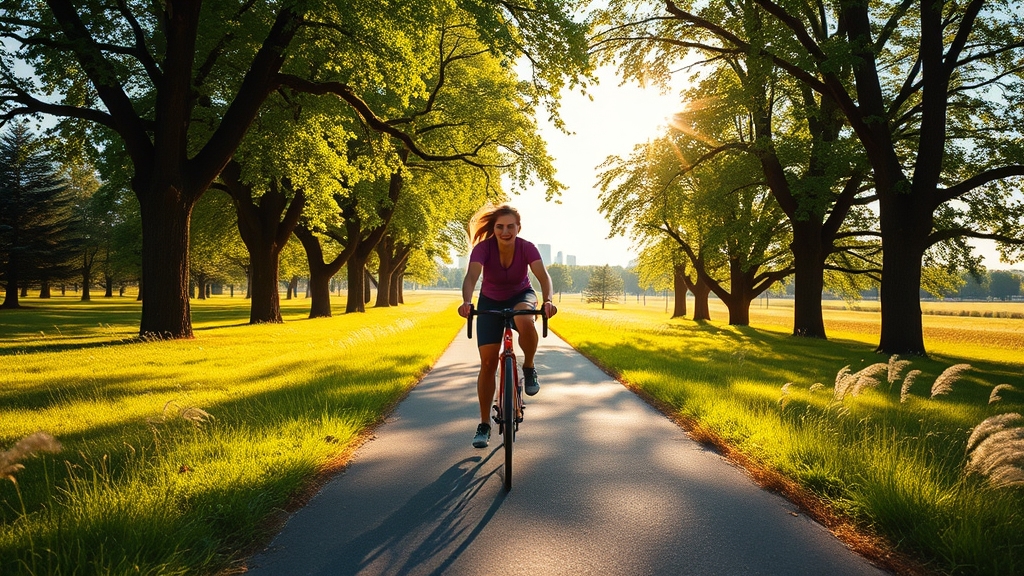
To effectively combat jet lag, timing your bike ride is essential for adjusting to a new time zone. Align your ride with local daylight to enhance your body’s exposure to natural light, which helps reset your circadian rhythms.
Aim for a ride during the late morning to early afternoon, when sunlight is at its peak. This not only boosts your mood and energy but also combats fatigue associated with jet lag.
Plan to ride for at least 30 minutes to an hour, and schedule your ride shortly after arrival to resist the urge to nap. By staying awake until local bedtime, you’ll better align your internal clock and enjoy a smoother adjustment into your new environment.
Exploring Your Destination on Two Wheels
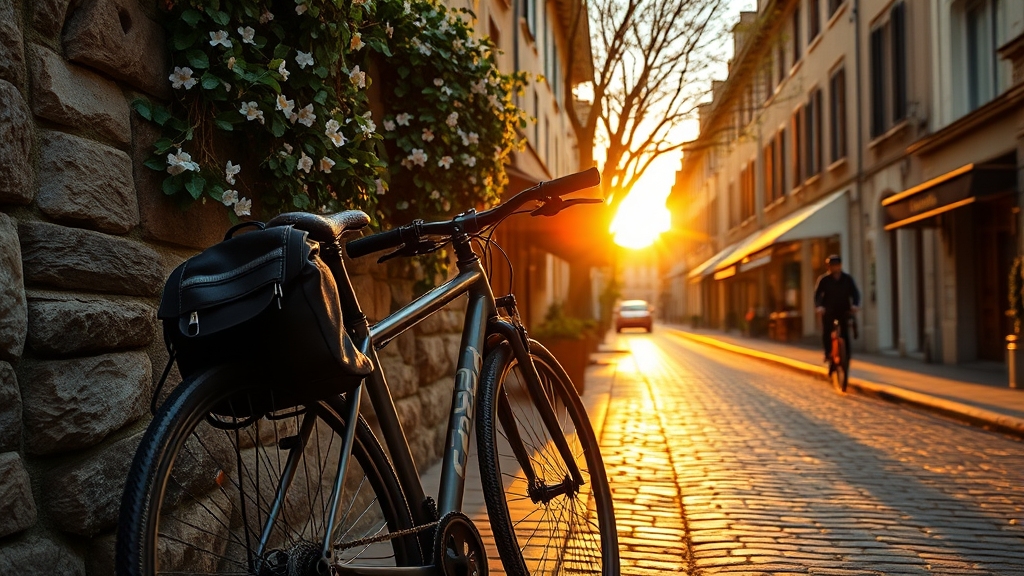
While exploring a new city, hopping on a bike can transform your travel experience. A bike ride enables you to cover more ground quickly, letting you discover key attractions and hidden gems. Plus, engaging in cycling right after arrival releases endorphins, combating fatigue and helping you adjust to the new time zone. Many cities offer bike-sharing programs, making it easy and affordable to rent a bicycle. Additionally, cycling contributes to sustainable transportation practices, promoting eco-friendly travel options.
| Benefits of Biking | Description |
|---|---|
| Efficient Exploration | Cover more areas in less time |
| Mood Boost | Endorphin release helps fight jet lag |
| Cultural Immersion | Experience local life firsthand |
| Health Perks | Enhances cardiovascular health and sleep |
Incorporating Light Exposure During Your Ride
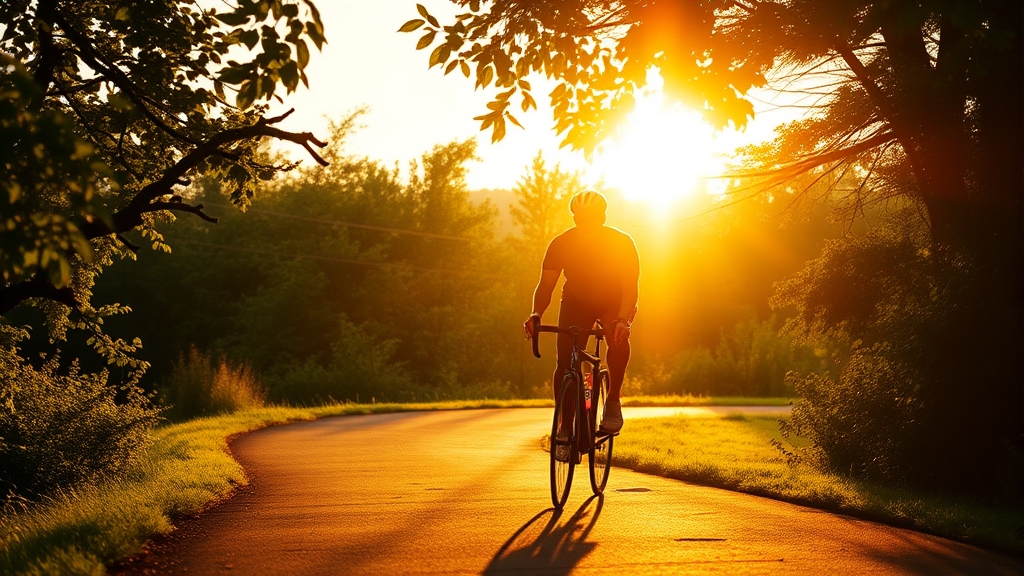
To maximize the benefits of your bike ride, consider the timing and route for ideal light exposure.
Riding in the morning can help reset your internal clock, while evening rides can ease your shift into the local time zone.
Planning routes that take advantage of natural sunlight will boost your mood and energy, making it easier to combat jet lag.
Morning Sunlight Benefits
As you pedal through the morning sunlight, your body receives an important signal that it’s time to wake up and embrace the day. This natural light exposure helps regulate circadian rhythms, making it essential for combating jet lag.
Just 30 minutes outdoors can greatly boost your mood and energy levels, which is critical when adjusting to a new time zone. Plus, the physical activity of biking promotes better sleep quality, reducing feelings of fatigue.
The morning sun also enhances serotonin production, improving your overall mental well-being while traveling. Engaging in bike rides lets you experience the local environment, enriching your journey with new sights and sounds that aid in your adjustment process. Additionally, staying hydrated during your ride can support overall wellness and help combat fatigue, similar to the benefits of a juice cleanse.
Evening Light Adjustments
Engaging in an evening bike ride not only allows you to explore your surroundings but also provides essential light exposure that can greatly aid your body in adjusting to a new time zone.
Spending time outdoors in evening light without sunglasses helps enhance melatonin production, promoting better sleep quality. Research shows that natural light exposure during the evening effectively resets your internal clock, making it easier for you to fall asleep at the appropriate local time.
Plus, combining physical activity with light exposure increases alertness and combats fatigue, helping you stay awake until local dinner time. Aim for at least a 30-minute ride to fully harness the benefits of evening light and improve your overall adjustment to the new time zone. Additionally, incorporating high refresh rates into your evening activities can enhance your cognitive performance and keep you engaged during your travels.
Route Planning Tips
When planning your bike route, it’s important to prioritize exposure to natural sunlight, especially during the daytime.
Here are three tips to enhance your ride:
- Choose routes through parks or open spaces: This maximizes sunlight exposure, boosting your mood and vitamin D production.
- Ride between 10 AM and 2 PM: These hours offer the best sunlight benefits, helping reset your sleep schedule.
- Incorporate varied terrain: Engaging in light physical activity while cycling can elevate your energy levels and improve sleep quality. Additionally, the benefits of natural sunlight exposure can contribute to overall health, reducing stress and enhancing mood.
Staying Hydrated While Cycling

Staying hydrated while cycling is essential for maintaining your performance and preventing dehydration.
You should aim to drink about 500-750 ml of water each hour, adjusting based on the heat and how hard you’re pushing yourself.
Keep an eye on signs of dehydration, like dark urine, to guarantee you’re keeping your body fueled and ready to ride.
Importance of Hydration
Hydration plays an essential role in your cycling performance, as even a slight 2% loss in body weight from dehydration can lead to increased fatigue and a drop in endurance.
To stay at your best while cycling, consider these key points:
- Drink 0.5 to 1 liter of water per hour: This depends on temperature and intensity.
- Choose electrolyte-rich drinks: They help replace lost sodium and potassium during long rides.
- Recognize dehydration signs: Increased heart rate and reduced cognitive function indicate you need to drink more.
Pre-hydrating before your ride guarantees your hydration levels are ideal.
Hydration Tips for Cyclists
Maintaining hydration while cycling is essential for optimizing your performance and overall enjoyment of the ride. Aim to drink about 500-750ml (17-25 fl oz) of water per hour during moderate to intense cycling.
Start hydrating before your ride by consuming at least 500ml (17 fl oz) in the hours leading up to it. In hot weather, consider incorporating electrolyte-rich drinks to replenish lost sodium and potassium.
To improve absorption, sip small amounts of water every 15-20 minutes instead of gulping down large quantities all at once. Keep an eye on your urine color; pale yellow indicates proper hydration, while dark yellow means it’s time to drink more water.
Stay proactive about hydration to keep your energy levels high! Remember that hydration and nutrition play a crucial role in preventing fatigue during your rides.
Signs of Dehydration
- Dry mouth – A clear indicator that your body needs hydration.
- Fatigue – Feeling unusually tired can signal that you’re not getting enough fluids.
- Dizziness – This can impair your cycling ability and make you more susceptible to accidents.
As you cycle, remember that your body can lose 2-3% of its weight in water, leading to decreased performance. Staying hydrated is crucial for kidney health maintenance, as dehydration can negatively affect your overall well-being.
Aim to drink about 400-800 ml of water per hour, and consider electrolyte-rich drinks to replenish minerals.
Monitor the color of your urine; light yellow means you’re hydrated, while dark yellow indicates you need more fluids.
Post-Ride Activities to Enhance Adjustment
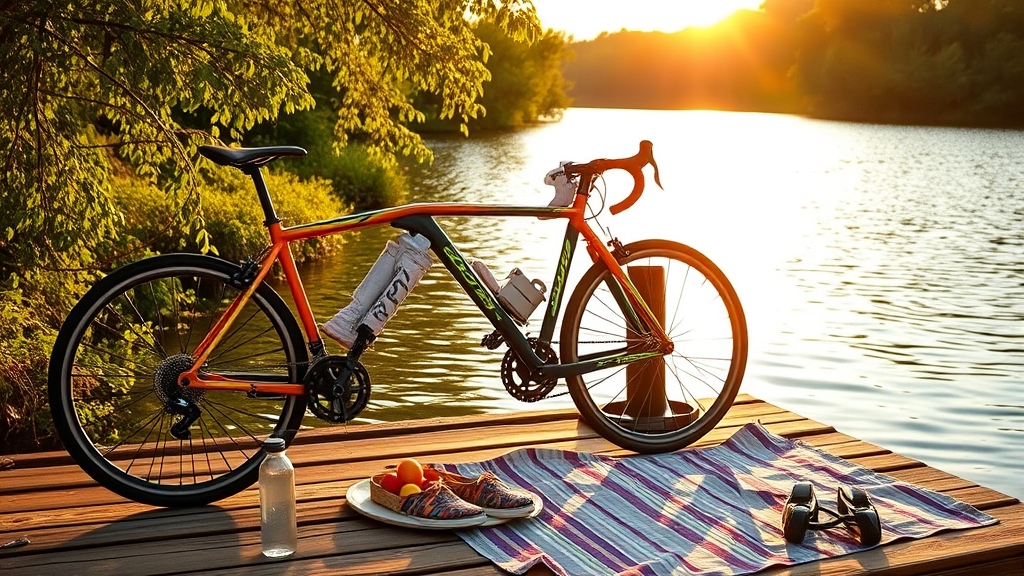
After a revitalizing bike ride, it’s important to engage in activities that help you adjust to your new time zone.
Start by hydrating well; proper hydration is essential for combating fatigue and enhancing your overall well-being.
Next, enjoy a nutritious meal featuring local foods high in melatonin, like cherries or bananas, to support your sleep cycle.
Spend some time outdoors to soak up natural sunlight and gain light exposure, which helps reset your circadian rhythm.
If you’re feeling fatigued, consider taking a short nap—no longer than 30 minutes—to boost your alertness without interfering with your local bedtime.
These post-ride activities will greatly enhance your adjustment to the new time zone and make your travels more enjoyable. Additionally, incorporating mindfulness techniques can further support your mental and emotional well-being during your travels.
Combining Cycling With Other Jet Lag Strategies
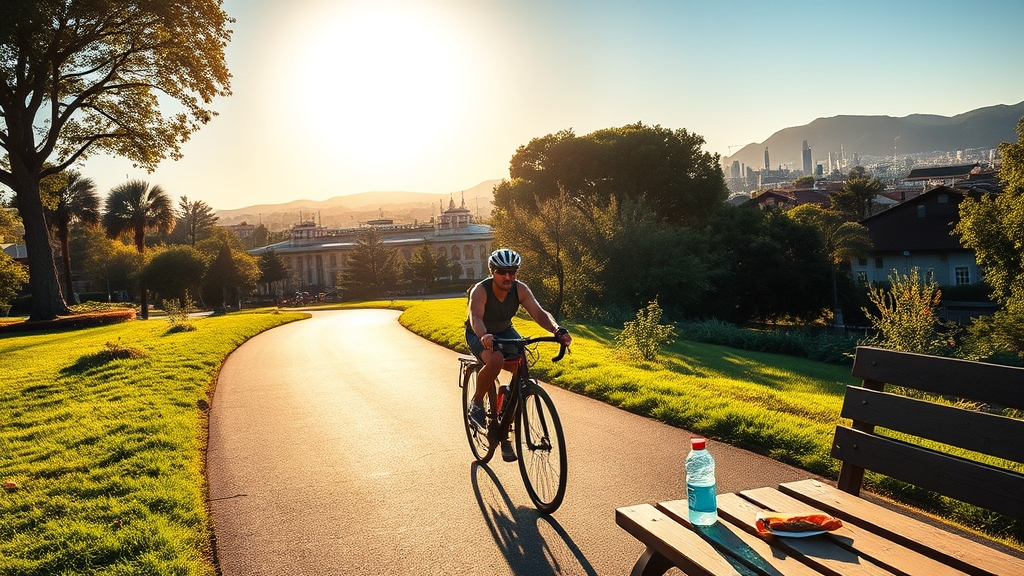
Engaging in a bike ride can be a fantastic kickoff to your travel experience, but combining it with other jet lag strategies amplifies its benefits.
Here are three ways to enhance your cycling impact:
- Stay Hydrated: Drink plenty of water before and after your ride to optimize energy levels and combat jet lag symptoms.
- Time Your Ride: Cycle during daylight to expose yourself to natural light, helping your body adjust to the local time zone.
- Incorporate Light Meals: Pair your biking with light meals, keeping your energy steady and ensuring you stay awake until local dinner time.
Additionally, consider incorporating natural remedies that can help alleviate some symptoms of jet lag, making your travel experience even more enjoyable.
Personal Experiences: Successful Bike Rides and Jet Lag
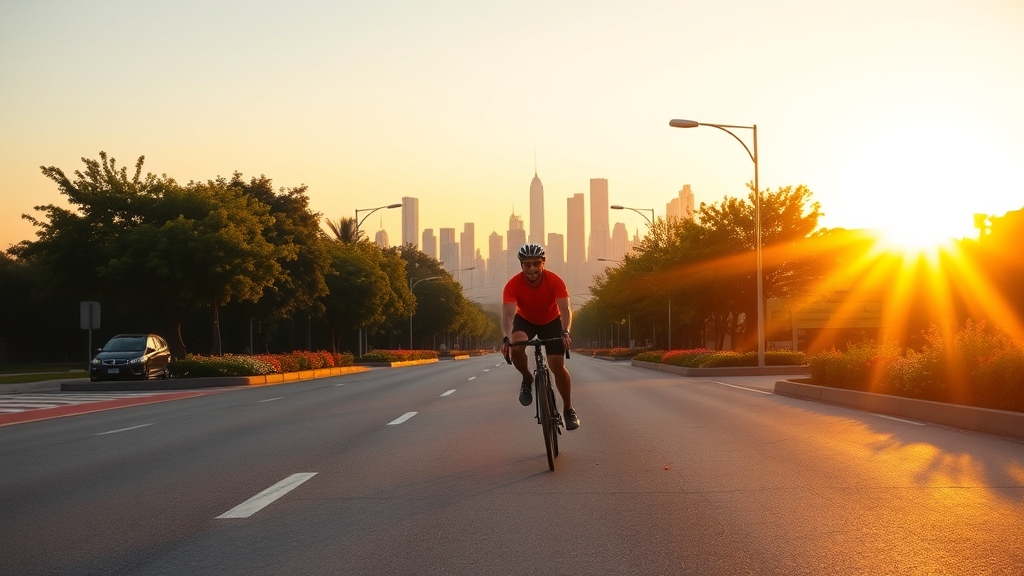
Many travelers swear by their bike rides as a remedy for jet lag, claiming that the combination of physical activity and exploration makes a world of difference.
When you hop on a bike after arriving at your destination, you boost circulation and energy levels, helping you adjust to the new time zone. The exposure to natural light during your ride can reset your internal clock, enhancing your mood and making it easier to adapt.
Many have found that light to moderate biking not only improves sleep quality but also reduces feelings of fatigue. Plus, planning a scenic route allows you to discover local landmarks, turning your bike ride into an enjoyable adventure that keeps you awake until bedtime. Additionally, biking near water parks offers a refreshing way to explore local attractions while staying active.
Frequently Asked Questions
What Is the Fastest Way to Cure Jet Lag?
The fastest way to cure jet lag is to engage in light exercise right after you arrive.
Go for a bike ride to boost your circulation and adjust to the new time zone. Make sure you soak up some natural light during your ride; it’ll help regulate your sleep-wake cycle.
Stay awake until local dinner time and hydrate well, as both will combat fatigue and help you acclimate more quickly to your surroundings.
How to Handle Jet Lag According to Very Frequent Travelers?
Imagine you’ve just landed in Tokyo after a long flight.
To handle jet lag like frequent travelers, start adjusting your sleep schedule a few days before departure.
Upon arrival, engage in light activities, like a bike ride, to boost your energy and reset your body clock.
Stay active until local dinner time and drink plenty of water during your flight.
These strategies will help you adapt more effectively to your new time zone.
What Is the Best Antidote for Jet Lag?
The best antidote for jet lag is to engage in light physical activity right after you arrive.
Biking’s a great option, as it boosts circulation and helps reset your internal clock. Plus, it releases endorphins, lifting your mood and energy levels.
How to Beat Jet Lag the Economist?
To beat jet lag, you should consider incorporating light physical activities into your arrival routine.
Engaging in exercise, like cycling, boosts your circulation and energy levels, helping you adjust to the new time zone faster. It also stimulates endorphin production, which can lift your mood and reduce fatigue.
Plus, getting outdoors exposes you to natural light, aiding in regulating your body’s internal clock, making it easier to adapt to local time.
Conclusion
Cycling not only helps you shake off jet lag, but it also boosts your mood and energy levels. Did you know that studies show just a 30-minute bike ride can enhance your alertness by up to 50%? So, next time you land in a new city, hop on a bike and explore. You’ll not only fight fatigue but also make unforgettable memories while pedaling through your destination. Embrace the ride, and let your adventure begin!
